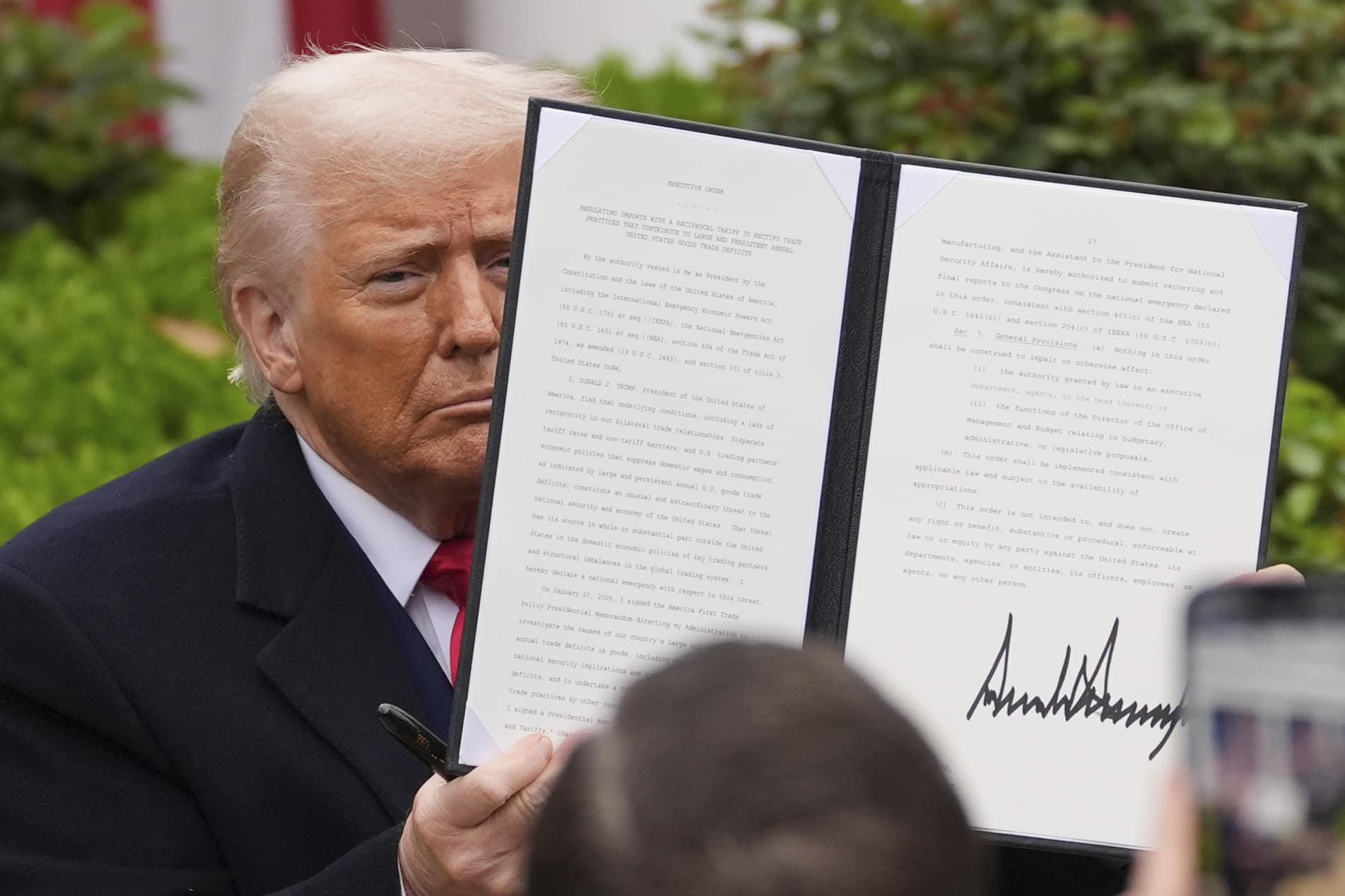Salceda says US has rights to tariffs, but doesn’t get logic behind rates

President Donald Trump holds a signed executive order during an event to announce new tariffs in the Rose Garden of the White House on Wednesday, April 2, in Washington. — AP Photo/Evan Vucci
MANILA, Philippines—The United States (US) has its own prerogative in terms of issuing tariffs for products entering its country, but economist and Albay 2nd District Rep. Joey Salceda admitted that he does not understand the logic behind some of the tariff rates.
Salceda, in a statement on Thursday, said that he expected the tariff rates imposed on Philippine products exported to the US to be higher than the 17 percent set by US President Donald Trump.
However, the lawmaker was surprised to learn that some US allies were subject to higher tariff rates than China, which is considered America’s main adversary on the global market.
“Sovereign countries can do as they please with their trade policy. I’m frankly surprised the tariffs rates imposed on us turned out lower than I expected. Among our competitors, the Philippines was imposed relatively lower retaliatory tariffs, so there are, possibly, some opportunities to explore,” Salceda said.
“The tariff rates imposed on Vietnam, a US-friendly country, are potentially crippling and are much higher than tariffs imposed on China, US’s main adversary. I don’t understand the geopolitical logic, and I have long given up trying. We just have to fortify our own house as much as we can,” he added.
Earlier, Trump announced new import tariffs for the US, in a bid to “strengthen the international economic position of the United States and protect American workers.”
Trump said a higher tariff was imposed on countries where the US suffers trade deficits.
While at 17 percent, Philippines products still enjoy a lower tariff rate compared to the 34 percent rate imposed on American products coming into the country.
READ: Trump sets 17% tariff on Philippine goods coming to America
This tariff rate for Philippine products sent to the US is also lower than most of Southeast Asia, like Vietnam’s 46 percent, Thailand’s 36 percent, Indonesia’s 32 percent, Malaysia’s 24 percent, and Cambodia’s 49 percent.
Only Singapore will get a 10 percent tariff rate, which is the baseline figure set by Trump.
Salceda noted that higher tariff rates for Philippine products is not the biggest hindrance to export competitiveness; rather, it is the cost of power and doing business in the country.
“The biggest hindrance to Philippine export competitiveness is not tariff rates, but power cost and the cost of doing business. We need to continue making strides in this area. The incentives under the CREATE MORE Act, especially the increased power cost deduction, help address these issues,” he said, referring to Republic Act 12066.
The Corporate Recovery and Tax Incentives for Enterprises to Maximize Opportunities for Reinvigorating the Economy law, passed in November 2024, seeks to make the Philippines a business destination of choice by amending the National Internal Revenue Code and improving the country’s policies on fiscal incentives.
“I hope the DTI (Department of Trade and Industry) has a comprehensive strategy to deal with potential disruptions in our economy, mainly in the labor intensive textile and footwear sector. Ayuda, job retraining, and unemployment assistance should also be ready if there are job losses in these sectors,” Salceda said.